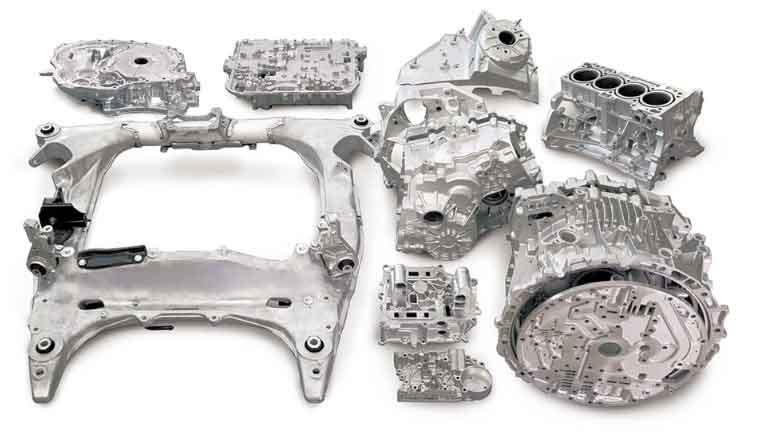
Die casting offers several advantages that make it a preferred manufacturing method for producing a wide range of components. Its unique characteristics and capabilities make it suitable for various industries. Here are the key advantages and applications of die casting:
Advantages of Die Casting:
- High Efficiency and Productivity: Die casting enables high-volume production with fast cycle times, making it a highly efficient manufacturing process. The ability to produce multiple parts in each cycle reduces production time and increases productivity.
- Excellent Dimensional Accuracy: Die casting provides excellent dimensional accuracy and repeatability. The precision and tight tolerances achieved through the use of carefully machined dies result in components with consistent dimensions and specifications.
- Complex Geometry and Intricate Details: Die casting allows for the production of components with complex geometries and intricate details. The high-pressure injection of molten metal into the die cavity ensures that the material fills even the most intricate features of the mold, resulting in complex-shaped components with high precision.
- Superior Surface Finish: Die casting produces components with smooth surfaces and fine details. The high-quality surface finish eliminates the need for additional machining or surface treatments, reducing production costs and improving the aesthetic appeal of the finished parts.
- High Strength and Durability: Die-cast components exhibit excellent mechanical properties, including high strength and durability. The rapid solidification of molten metal during the casting process results in a fine-grained microstructure that enhances the strength of the component.
- Cost-Effective for Large-Scale Production: Die casting is a cost-effective manufacturing method for large-scale production runs. The ability to quickly produce multiple components in each cycle, combined with minimal material waste, reduces production costs per unit.
- Wide Range of Materials: Die casting accommodates a wide range of materials, including aluminum, zinc, magnesium, copper, and their alloys. The choice of material can be tailored to meet specific requirements such as strength, weight, corrosion resistance, and thermal conductivity.
Applications of Die Casting:
- Automotive Industry: Die casting is extensively used in the automotive industry for the production of engine components, transmission parts, chassis components, and decorative trim. Its ability to produce complex shapes and high-strength components makes it suitable for automotive applications.
- Aerospace Industry: Die casting finds applications in the aerospace industry for the production of critical components such as turbine blades, engine housings, and structural parts. The lightweight and high-strength characteristics of die-cast components are particularly advantageous in aerospace applications.
- Electronics and Electrical Industry: Die casting is used in the electronics and electrical industry for producing components such as heat sinks, connectors, housings, and enclosures. The ability to achieve complex shapes and precise dimensions is crucial in this industry.
- Consumer Goods: Die casting is employed in the production of consumer goods such as appliances, furniture hardware, and decorative items. The process offers design flexibility, high-quality surface finish, and cost-effective production for these applications.
- Industrial Equipment: Die casting is utilized in the production of various industrial equipment components, including pump housings, valve bodies, and hydraulic parts. The ability to produce components with intricate internal passages and precise dimensions makes die casting a suitable choice.
- Telecommunications: Die casting is employed in the telecommunications industry for producing components like communication enclosures, connectors, and antenna brackets. The process provides the necessary strength, durability, and precision required for telecommunications equipment.
Die casting’s advantages, including high efficiency, dimensional accuracy, complex geometries, and excellent surface finish, make it an ideal manufacturing method for a wide range of applications. Its versatility and ability to produce high-quality, high-strength components make it a preferred choice across industries.
